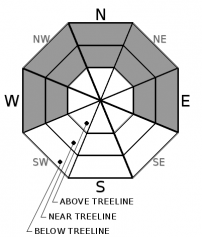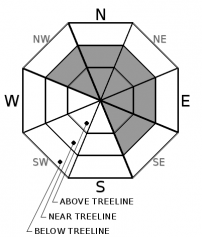| Thursday | Thursday Night | Friday | |
|---|---|---|---|
| Weather: | Mostly cloudy. Snow in the morning, then chance of snow in the afternoon. Snow levels below 7000 feet. Chance of precipitation is 95%. | Mostly cloudy then becoming partly cloudy. Snow levels below 7000 feet. Chance of precipitation is 5%. | Partly cloudy then becoming sunny. Snow levels below 7000 feet. Chance of precipitation is 0%. |
| Temperatures: | 29 to 34 deg. F. | 14 to 20 deg. F. | 33 to 38 deg. F. |
| Mid Slope Winds: | West 15 to 20 mph. Gusts up to 45 mph decreasing to 30 mph in the afternoon. | Light winds. | Light winds. |
| Expected snowfall: | 80% probability of 3 to 6 inches. 20% probability of 6 to 8 inches. | SWE = 0.20-0.45 inch. | No accumulation. | SWE = none. | No accumulation. | SWE = none. |
| Thursday | Thursday Night | Friday | |
|---|---|---|---|
| Weather: | Mostly cloudy. Snow in the morning, then chance of snow in the afternoon. Snow levels below 7000 feet. Chance of precipitation is 95%. | Mostly cloudy then becoming partly cloudy. Snow levels below 7000 feet. Chance of precipitation is 5%. | Partly cloudy then becoming sunny. Snow levels below 7000 feet. Chance of precipitation is 0%. |
| Temperatures: | 25 to 30 deg. F. | 12 to 17 deg. F. | 29 to 35 deg. F. |
| Ridge Top Winds: | Southwest 25 to 35 mph with gusts to 75 mph becoming west 15 to 25 mph with gusts to 45 mph in the afternoon. | Northeast 15 to 25 mph with gusts to 40 mph. | Southeast 15 to 25 mph. Gusts up to 40 mph increasing to 55 mph in the afternoon. |
| Expected snowfall: | 80% probability of 3 to 6 inches. 20% probability of 6 to 9 inches. | SWE = 0.30-0.55 inch. | No accumulation. | SWE = none. | No accumulation. | SWE = none. |




















